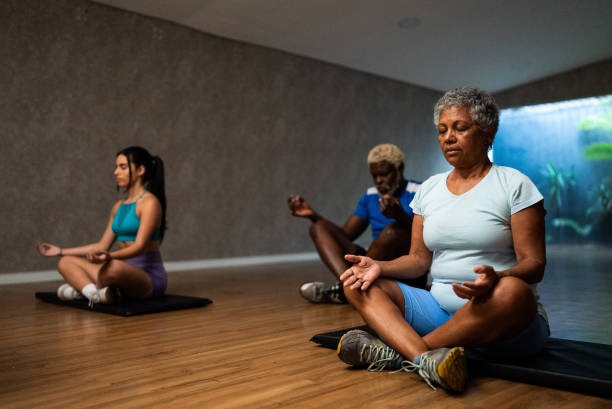It’s easy to feel overwhelmed these days — between packed schedules, digital noise, and constant pressure to perform, mental fog can creep in without warning. But one of the most reliable ways to reset and refocus? Movement.
You don’t need to be an athlete or clock an hour at the gym. Whether it’s a brisk walk, stretching session, or a few laps around the track, consistent physical activity clears the mental clutter and helps create space for sharper thinking and emotional balance.
According to a 2023 report from the CDC, adults who engage in regular physical activity experience 43% fewer days of poor mental health per month than those who are inactive. The science is clear: when the body moves, the mind follows.
Why Movement Supports Mental Clarity
We often separate physical health from mental wellness — but they’re deeply connected. Physical activity increases blood flow to the brain, supports the release of mood-boosting neurotransmitters like dopamine and serotonin, and activates the parasympathetic nervous system, which helps us calm down and regulate stress.
Even just 20–30 minutes of movement a day can:
- Boost concentration – Exercise stimulates brain regions involved in focus and memory
- Improve mood – It reduces anxiety and lifts feelings of depression
- Sharpen decision-making – Clearer thoughts lead to better choices
- Reduce brain fog – Movement helps process emotions and organize mental tasks
- Enhance creativity – Physical activity promotes free-form thinking and problem-solving
The best part? These benefits often kick in immediately — making movement one of the most accessible tools for mental clarity.
Balance Starts with Intentional Action
Life balance isn’t about doing less — it’s about doing what fuels you. And movement does just that. It acts as a pressure valve for stress, a reset button after long work sessions, and a catalyst for better sleep, nutrition, and emotional regulation.
Here are some simple ways to build movement into a busy life:
- Start your morning with a stretch or walk
- Take active breaks during long work hours — even 5 minutes matters
- Use movement as transition time between tasks or meetings
- Try activities that are fun, not just structured — like dancing or hiking
- Join a group or team for motivation and social connection
Even changing into a favorite pair of running shoes or track uniforms can mentally signal that it’s time to switch gears and focus on yourself — not just your to-do list.
Movement Builds Emotional Resilience
When you move regularly, you don’t just think better — you cope better. Physical activity trains your body to handle stress more efficiently, reduces cortisol levels, and provides a healthy outlet for frustration or tension.
This emotional boost extends to all areas of life:
- Work – Better focus and patience under pressure
- Relationships – Improved mood leads to stronger communication
- Sleep – Active bodies tend to rest better
- Self-esteem – Meeting movement goals builds a sense of accomplishment
- Perspective – Movement creates mental space to zoom out and see things clearly
Whether you’re jogging solo or moving with a team, the sense of progress and groundedness that follows is hard to beat.
It’s About Progress, Not Performance
One common roadblock? Thinking you need to go “all in” to get results. But mental clarity and balance aren’t tied to the number of miles you run or how fast you lift. They’re built in the consistency — the act of choosing movement as a form of care, not punishment.
Start where you are. Walk around the block. Stretch during your lunch break. Put on your gear and do five jumping jacks. It’s not about perfection — it’s about giving your body and mind what they need to thrive.
Final Thought
You don’t need a fitness plan to feel better. You just need to move — with intention, with kindness, and with a focus on how it makes you feel, not just how you look.
Movement is more than physical — it’s mental clarity, emotional balance, and a powerful step toward showing up as your best self.



